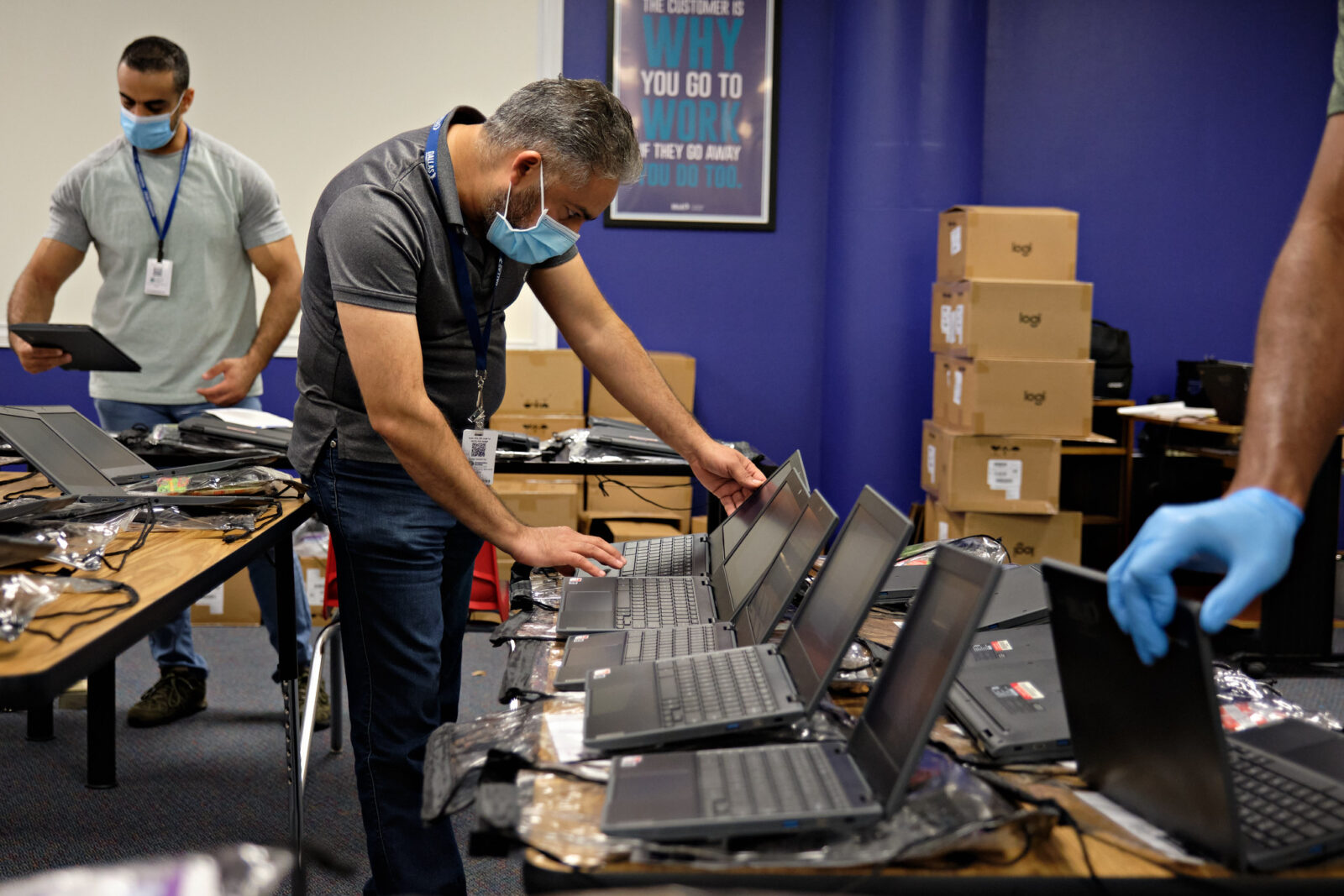Follow-up: Dallas ISD’s pandemic plan to connect students didn’t work, new cheaper plan is now in effect
Almost three years ago, we told you about Dallas ISD’s innovative plan for students to access high-speed internet access at home by creating a private wireless network. The $4.5 million project was piloted at Lincoln, Spruce, South Oak Cliff, Pinkston and Roosevelt high schools.
Today, the plan is no longer viable.

“The performance was not any better than a hot spot. That’s the bottom line,” says Sean Brinkman.
He’s the chief technology officer for Dallas ISD. The district invested in 40,000 hot spots during the pandemic. The hot spots were meant to be a temporary solution. Brinkman’s predecessor Jack Kelanic (who is now chief technology officer for the Los Angeles ISD) was pushing for a permanent solution by focusing on the private wireless network.
After installing large cell towers on each of the pilot campuses, Brinkman says Dallas ISD ran a proof of concept for a year and between the “astronomical cost” and poor service, the district had to change course.
“Honestly, based on cost and performance and the changes in commercial technology, specifically 5G, we decided not to move forward building out a private network,” Brinkman says.
Prior to the pandemic, most high speed connectivity was 4G; now, it’s a 5G world. Brinkman explains that chromebooks and iPads now come with a built-in E-SIM card which basically allows the computer to act like a cell phone with a data plan.
A Chromebook with a 5G SIM card is just $20 more than a Chromebook without a card, and more importantly, according to Brinkman, these devices are more reliable than the private wireless network or hotspots.
“I can light up a kid’s computer with the same high speed connectivity that I have on my cell phone,” Brinkman says. And, the district receives a discounted rate from providers like AT&T and T-Mobile to provide internet service on these iPads and Chromebooks.
Brinkman says the cost of providing internet access at home for students who don’t have internet access already is roughly $1 million a year. For the last couple of years, Dallas ISD has used Emergency Connectivity Funding from the federal government along with other pandemic-related funding sources to pay providers for internet services. However, Brinkman says those funding sources are now drying up.
“There’s no more ECF. There’s no more ACP (Affordable connectivity program). So, looking forward, it’s going to be a challenge.”
Brinkman says students are asked at the beginning of the school year if they have problems with internet access at home, students who say ‘yes’ are given a computer with an e-sim card. Last year, the district purchased 15,000 “lines” with providers so those students without access at home can have broadband. Brinkman says they are not using all of those lines. He says the demand has dropped since the pandemic and students are back at school.

District officials say right now, about 17% of Dallas ISD students don’t have broadband at home. During the pandemic, the numbers were right around one-third of students.
“We think this is the future. The 5G technology — you can take that anywhere in the country, even out of the country, and it works,” Brinkman says.
Share This Story, Choose Your Platform!

Sujata Dand is an award-winning journalist who is energized by change brought in communities in response to news stories. She lives in and has spent most of her reporting career in Dallas, with ample experience covering health care, education and public policy.
“I think it’s important to elevate voices that are often ignored,” Dand says. “For me, that means meeting the people in our communities. We need to see people and listen to them. It’s often a huge act of courage for people to openly share their lives. So, I feel an enormous responsibility in making sure my stories are authentic and fair.”
Dand worked at KERA for almost 10 years, where she produced several television documentaries, including “Life in the Balance: The Health Care Crisis in Texas” and “High School: The Best and the Rest.” She also headed the multimedia project “Boyfriends,” which examined the complex personal and cultural factors that contribute to the way adolescent girls form and maintain relationships. Her work has garnered several local Emmys and national awards including a Gracie for best reality program.
Prior to her work with KERA, Sujata was a reporter and anchor at the CBS affiliate in Wichita Falls, Texas. She has worked as a freelance reporter for NPR and Dallas Morning News. Dand is a graduate of Trinity University in San Antonio.
Areas of Expertise:
health care, education, public policy
Location Expertise:
Dallas, Texas
Official Title:
Senior Editor and Reporter
Email Address:
sujata@dallasfreepress.com





